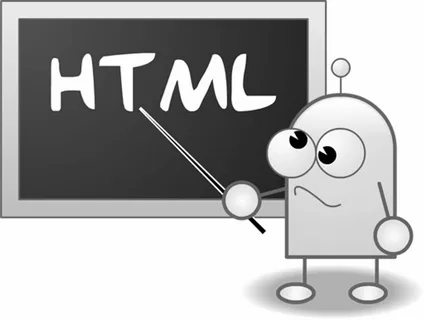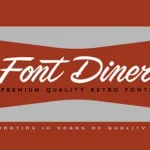
In the ever-evolving landscape of web development, React has emerged as a dominant player, empowering developers to build interactive and dynamic user interfaces. One crucial aspect of crafting compelling web applications is the integration of HTML editors. For those uninitiated, an HTML editor enables users to manipulate and create HTML content seamlessly. In this article, we embark on a journey to explore the realm of React HTML editors, with a particular focus on the renowned Froala Editor.
Table of Contents
Understanding the Landscape of React HTML Editors
Before delving into the intricacies of integrating the Froala Editor into a React app, let’s first establish a foundational understanding of React HTML editors in general.
The Need for React HTML Editors
In the realm of modern web development, the demand for rich, interactive content creation experiences has surged. React HTML editors address this need by providing developers with a versatile toolset to incorporate a robust editing environment directly into their applications.
Key Features of React HTML Editors
React HTML editors typically come equipped with a range of features that enhance the content creation process. These may include WYSIWYG (What You See Is What You Get) editing, real-time collaboration, image and multimedia handling, and advanced formatting options. These features collectively empower developers to create user-friendly and visually appealing content creation interfaces.
The Importance of Plug-and-Play Solutions
For developers, time is of the essence. The ability to seamlessly integrate third-party tools into a React application is crucial for maintaining efficiency and productivity. Plug-and-play solutions simplify this process by offering pre-built components that can be easily incorporated into the application, reducing development time and effort.
Integrating Froala Editor into a React App
Now that we have a solid understanding of the landscape, let’s turn our attention to the star of the show – the Froala Editor. Renowned for its versatility and feature-rich capabilities, Froala Editor provides an ideal solution for developers seeking a powerful HTML editing tool. In this section, we’ll explore the step-by-step process of integrating Froala Editor into a React application.
Setting Up a React App
Before we can integrate the Froala Editor, we need to set up a basic React application. Assuming you have Node.js and npm installed, you can create a new React app using the following commands:
bash
npx create-react-app my-froala-app
cd my-froala-app
Installing Froala Editor
Next, we need to install the Froala Editor package. Froala offers a dedicated React component that streamlines the integration process. Install it using npm:
bash
npm install froala-editor
Importing Froala Editor Component
Once installed, import the Froala Editor component into your React application. This can typically be done in your desired component file:
jsx
import React from ‘react’;
import ‘froala-editor/js/froala_editor.pkgd.min.js’;
import ‘froala-editor/css/froala_editor.pkgd.min.css’;
import FroalaEditorComponent from ‘react-froala-wysiwyg’;
Implementing the Editor Component
Now, let’s integrate the Froala Editor component into a React component. You can customize the editor by passing various options as props. Here’s a basic example:
jsx
import React from ‘react’;
import FroalaEditorComponent from ‘react-froala-wysiwyg’;
const MyEditor = () => {
return (
<div>
<h2>Your Content Editor</h2>
<FroalaEditorComponent
tag=’textarea’
model=”
/>
</div>
);
};
export default MyEditor;
Configuring Froala Editor Options
Froala Editor offers a plethora of configuration options to tailor the editing experience according to your requirements. For instance, you can customize toolbar buttons, set allowed HTML tags, and define styling options. Here’s an example of configuring some options:
jsx
<FroalaEditorComponent
tag=’textarea’
config={{
toolbarButtons: {
moreText: {
buttons: [‘bold’, ‘italic’, ‘underline’, ‘strikeThrough’, ‘subscript’, ‘superscript’],
align: ‘left’,
buttonsVisible: 3,
},
},
placeholderText: ‘Start typing here…’,
}}
model=”
/>
Handling Editor Events
Froala Editor allows you to capture and handle various events, providing flexibility in responding to user interactions. For example, you can listen for the contentChanged event:
jsx
<FroalaEditorComponent
tag=’textarea’
onModelChange={(newModel) => console.log(‘Content changed:’, newModel)}
model=”
/>
Additional Considerations
As with any integration, it’s essential to consult the Froala Editor documentation for a comprehensive list of features, options, and best practices. Pay attention to licensing requirements, especially if your application is intended for commercial use.
Advanced Customization and Best Practices
Now that we’ve covered the basics of integrating Froala Editor into a React app, let’s delve into advanced customization options and best practices to optimize your HTML editing experience.
Extending the Toolbar Functionality
One of Froala Editor’s strengths lies in its customizable toolbar. You can extend its functionality by adding custom buttons or modifying existing ones. For example, to add a custom button for code insertion:
jsx
<FroalaEditorComponent
tag=’textarea’
config={{
toolbarButtons: {
moreText: {
buttons: [‘bold’, ‘italic’, ‘underline’, ‘strikeThrough’, ‘subscript’, ‘superscript’, ‘|’, ‘insertCode’],
align: ‘left’,
buttonsVisible: 4,
},
},
placeholderText: ‘Start typing here…’,
}}
model=”
onInitialized={(editor) => {
editor.addButton(‘insertCode’, {
icon: ‘>’,
title: ‘Insert Code’,
focus: false,
undo: true,
refreshAfterCallback: true,
callback: function () {
// Implement your code insertion logic here
editor.html.insert(‘<code>Your code here</code>’);
},
});
}}
/>
This example demonstrates how to add a custom “Insert Code” button to the toolbar, enhancing the editor’s capabilities.
Implementing Collaborative Editing
For applications that require real-time collaboration, Froala Editor provides collaborative editing features. You can integrate these features by incorporating additional libraries such as Socket.io for handling real-time communication between users.
jsx
// Install Socket.io
npm install socket.io-client
// In your React component
import io from ‘socket.io-client’;
const socket = io(‘your-server-url’);
const MyCollaborativeEditor = () => {
return (
<div>
<h2>Collaborative Content Editor</h2>
<FroalaEditorComponent
tag=’textarea’
model=”
onModelChange={(newModel) => {
// Emit the new content to the server for broadcasting to other users
socket.emit(‘contentChanged’, newModel);
}}
/>
</div>
);
};
In this example, changes made by one user are broadcasted to others in real-time, facilitating a collaborative editing environment.
Optimizing Performance
As your application grows, optimizing the performance of the Froala Editor becomes crucial. Consider lazy-loading the editor component or implementing virtualization techniques if dealing with a large number of editors on a single page. Additionally, explore asynchronous loading for the Froala Editor script to enhance overall page load times.
Security Considerations
When allowing user-generated HTML content, security becomes paramount. Froala Editor provides options to configure allowed HTML tags and attributes, helping mitigate potential security risks. Regularly update the Froala Editor package to benefit from security patches and improvements.
Troubleshooting and Common Issues
Even with a well-integrated solution, developers may encounter challenges. Let’s address common issues and provide troubleshooting tips to ensure a smooth experience with Froala Editor in React applications.
Dealing with Styling Conflicts
Integration of external libraries can sometimes lead to styling conflicts. To resolve this, encapsulate the Froala Editor within a styled container, ensuring it doesn’t inherit conflicting styles from the surrounding elements.
jsx
<div className=”editor-container”>
<FroalaEditorComponent
tag=’textarea’
model=”
/>
</div>
Handling Undo/Redo Functionality
Froala Editor manages undo and redo functionality internally. If you encounter issues with custom undo/redo implementations, ensure they align with Froala’s handling or consider disabling custom implementations to prevent conflicts.
Cross-Browser Compatibility
Test your React application with Froala Editor across various browsers to ensure compatibility. Froala provides documentation on supported browsers, and addressing browser-specific quirks early in development prevents issues later on.
Looking Ahead – Future Developments and Trends
As technology evolves, so does the landscape of web development. Keep an eye on Froala Editor updates, React releases, and emerging trends in HTML editing. Stay connected with the developer community to explore new features, share insights, and adapt your implementation to the ever-changing demands of the digital world.
Evolving Ecosystem: Embracing Progressive Web Applications (PWAs) with Froala Editor and React
As the web development landscape embraces Progressive Web Applications (PWAs), integrating Froala Editor into React applications gains further significance. PWAs offer a seamless, app-like experience to users, and combining this approach with a robust HTML editor enhances the interactivity of web applications. Consider exploring service workers, caching strategies, and responsive design principles to make your React application with Froala Editor a progressive and engaging experience for users across different devices.
Enhancing Accessibility in HTML Editing
Accessibility is a critical aspect of modern web development. To ensure that the content created using Froala Editor is accessible to all users, implement proper semantic HTML, provide alternative text for images, and test your application with screen readers. Froala Editor itself offers accessibility features, and leveraging them aligns with the principles of inclusive design.
Community Contributions and Extensions
Tap into the vibrant developer community around React and Froala Editor. Explore community-contributed plugins, extensions, and themes that can add new dimensions to your HTML editing capabilities. Participate in forums, contribute to open-source projects, and share your experiences to enrich the collective knowledge base.
Integrating Rich Media and Advanced Features
Take full advantage of Froala Editor’s capabilities by exploring advanced features such as video embedding, file attachments, and integration with cloud services. Enhance your React application by allowing users to seamlessly integrate multimedia content, providing a more comprehensive and engaging content creation experience.
Performance Monitoring and Analytics
In a production environment, it’s crucial to monitor the performance of your React application with Froala Editor. Implement analytics tools to track user interactions, identify potential bottlenecks, and gather insights into how users engage with the HTML editing features. This data-driven approach enables continuous improvement and optimization of the user experience.
Future-Proofing Your Implementation
As technologies evolve, it’s essential to future-proof your React application with Froala Editor. Stay abreast of updates, security patches, and emerging standards in React and HTML editing. Regularly audit your codebase, update dependencies, and explore new features introduced by Froala to ensure your application remains robust, secure, and aligned with the latest industry standards.
RELATED ARTICLES
Latest Articles
 Unlocking Success: Mastering Bank PO Interview PreparationIn EducationApril 24, 2024For banking careers, PO interviews stand as formidable […]
Unlocking Success: Mastering Bank PO Interview PreparationIn EducationApril 24, 2024For banking careers, PO interviews stand as formidable […] The Strategic Value of Purchasing FontsIn TipsApril 18, 2024In today’s visually driven world, fonts are more […]
The Strategic Value of Purchasing FontsIn TipsApril 18, 2024In today’s visually driven world, fonts are more […] Revolutionizing Business: How AI Transforms Customer Experience in the Inflatable IndustryIn BusinessApril 16, 2024Inflatable water slides are the epitome of summer fun, […]
Revolutionizing Business: How AI Transforms Customer Experience in the Inflatable IndustryIn BusinessApril 16, 2024Inflatable water slides are the epitome of summer fun, […] Most Asked Microservice Interview Questions For 2024In TechnologyApril 2, 2024To keep up with changing trends in the tech industry […]
Most Asked Microservice Interview Questions For 2024In TechnologyApril 2, 2024To keep up with changing trends in the tech industry […] Best JavaScript and CSS Library In 2024In TechnologyApril 2, 2024With the ever-expanding functionality of web […]
Best JavaScript and CSS Library In 2024In TechnologyApril 2, 2024With the ever-expanding functionality of web […] Front-End Development Trends to Follow in 2024In TechnologyApril 2, 2024For better engagement, the front-end development of […]
Front-End Development Trends to Follow in 2024In TechnologyApril 2, 2024For better engagement, the front-end development of […] Simplifying Mealtime: Meal Prepping for a Family of FourIn UncategorizedMarch 22, 2024In the hustle and bustle of daily life, planning and […]
Simplifying Mealtime: Meal Prepping for a Family of FourIn UncategorizedMarch 22, 2024In the hustle and bustle of daily life, planning and […] How to Freeze Dry Candy With And Without a Machine?In FoodFebruary 27, 2024A candy lover constantly searches for novel and […]
How to Freeze Dry Candy With And Without a Machine?In FoodFebruary 27, 2024A candy lover constantly searches for novel and […] How to Get Something Out Of Your Eye Immediately?In healthFebruary 27, 2024Getting something inside your eyes can be frustrating […]
How to Get Something Out Of Your Eye Immediately?In healthFebruary 27, 2024Getting something inside your eyes can be frustrating […] The Evolution of Remote Control Technology: From RC Cars to DronesIn TechnologyFebruary 22, 2024Remote control technology has come a long way since […]
The Evolution of Remote Control Technology: From RC Cars to DronesIn TechnologyFebruary 22, 2024Remote control technology has come a long way since […] Unveiling the most popular carnival costumes: A colorful parade of creativityIn FashionFebruary 19, 2024In the world of festivities and merrymaking, few […]
Unveiling the most popular carnival costumes: A colorful parade of creativityIn FashionFebruary 19, 2024In the world of festivities and merrymaking, few […] Custom GPTs: The Next AI Opportunity for BusinessesIn Business, TechnologyFebruary 14, 2024The rise of artificial intelligence has transformed […]
Custom GPTs: The Next AI Opportunity for BusinessesIn Business, TechnologyFebruary 14, 2024The rise of artificial intelligence has transformed […]
stopie.com is a participant in the Amazon Services LLC Associates Program, an affiliate advertising program designed to provide a means for sites to earn advertising fees by advertising and linking to Amazon.com.
Clicking on an Amazon link from stopie.com does not increase the cost of any item you purchase.
We will only ever link to Amazon products that we think our visitors may be interested in and appreciate learning more about.



